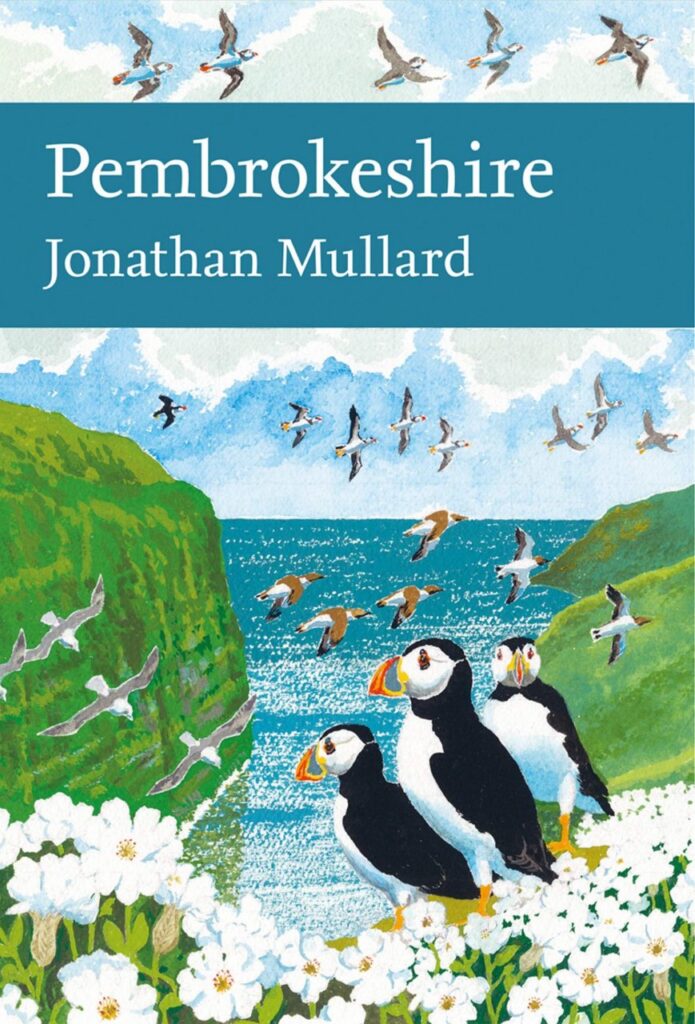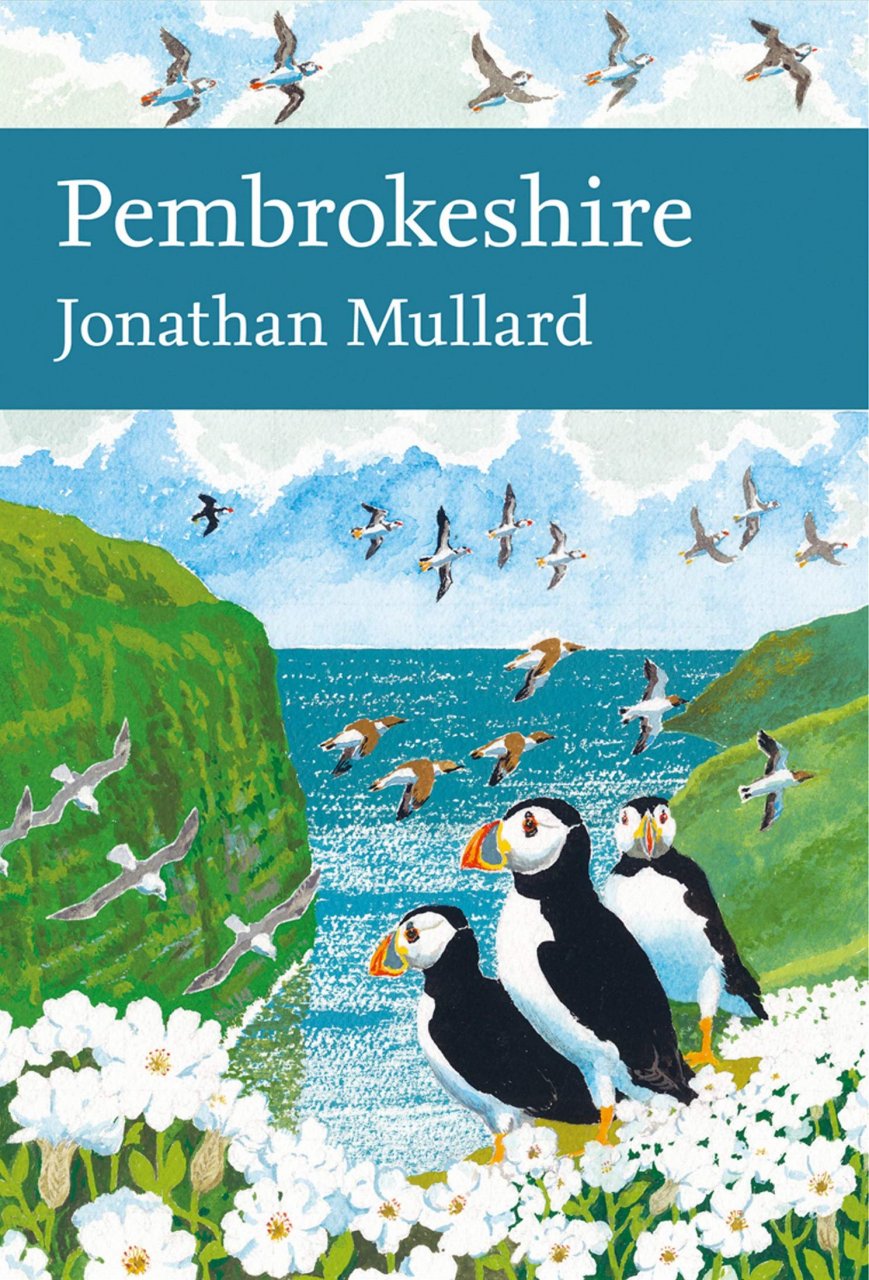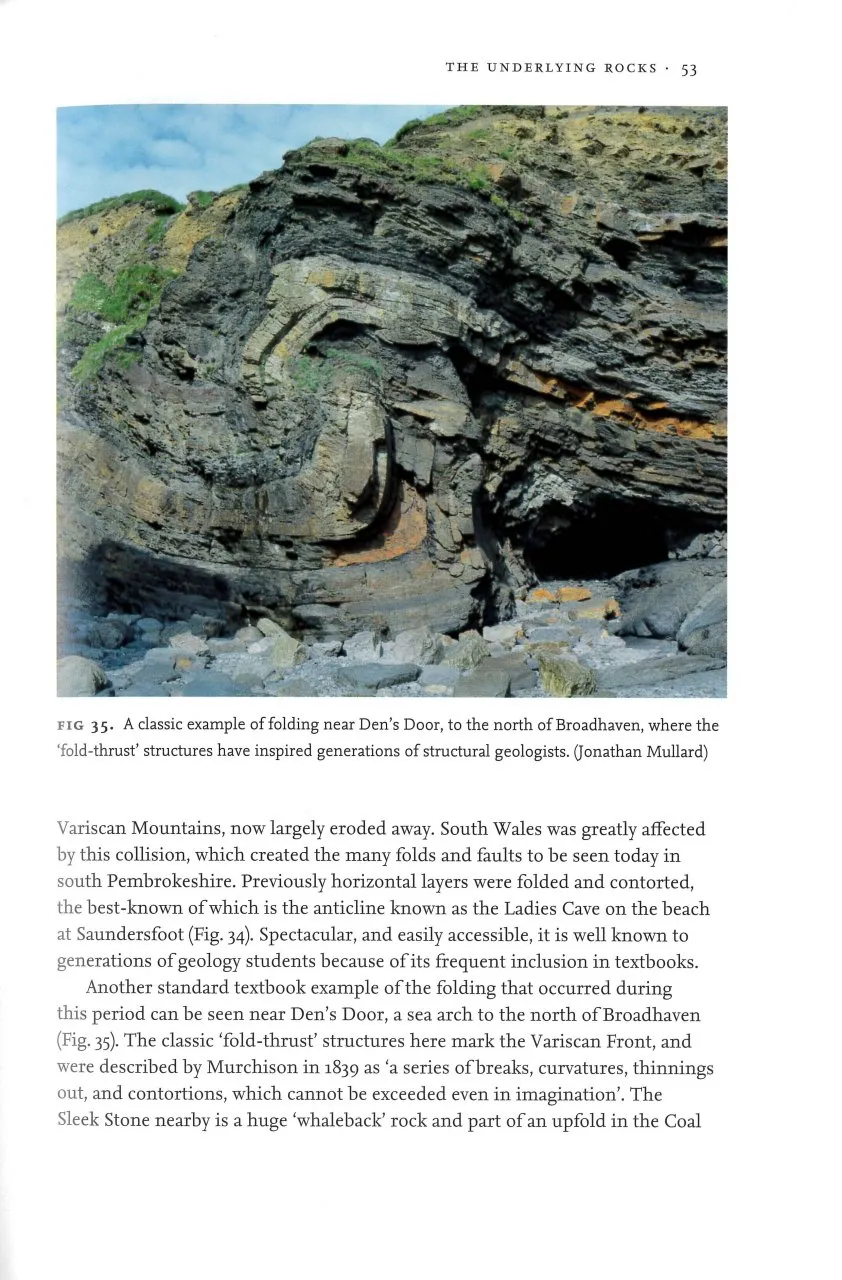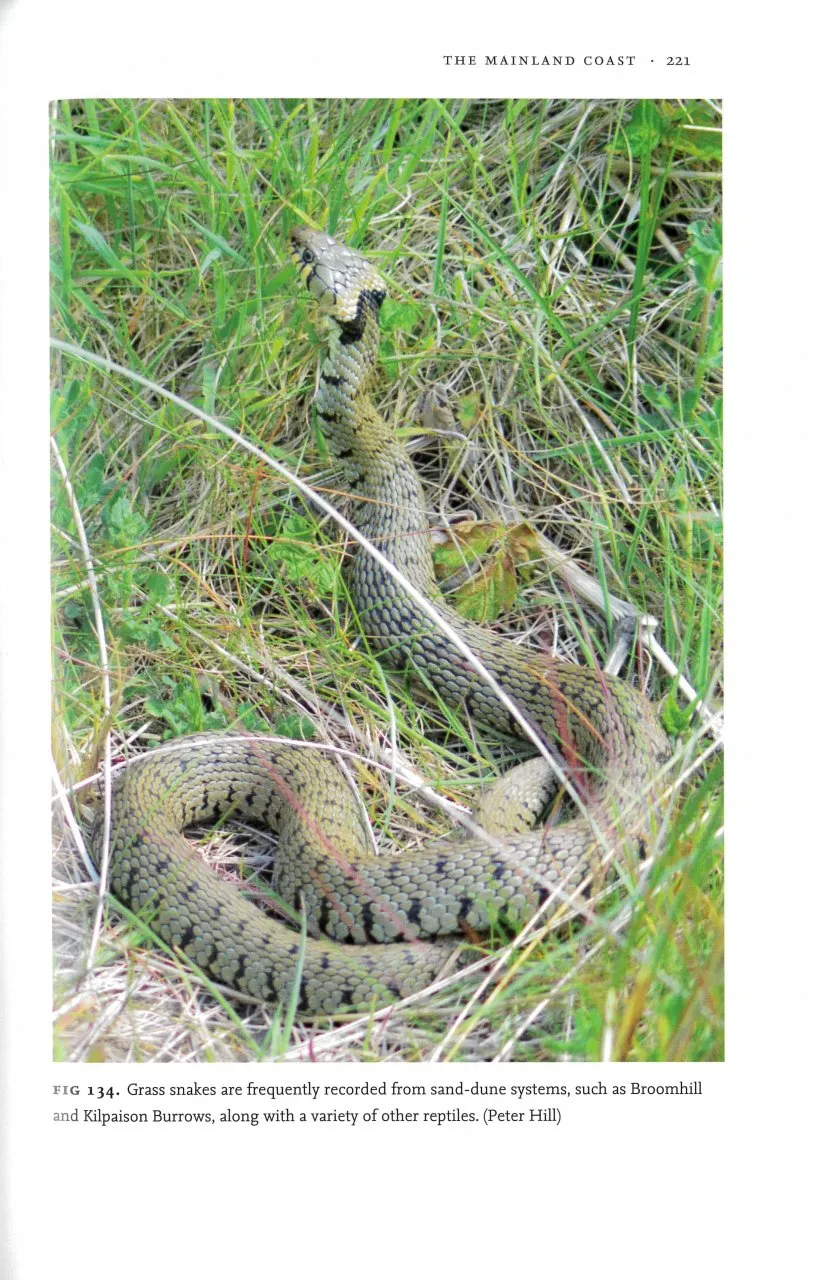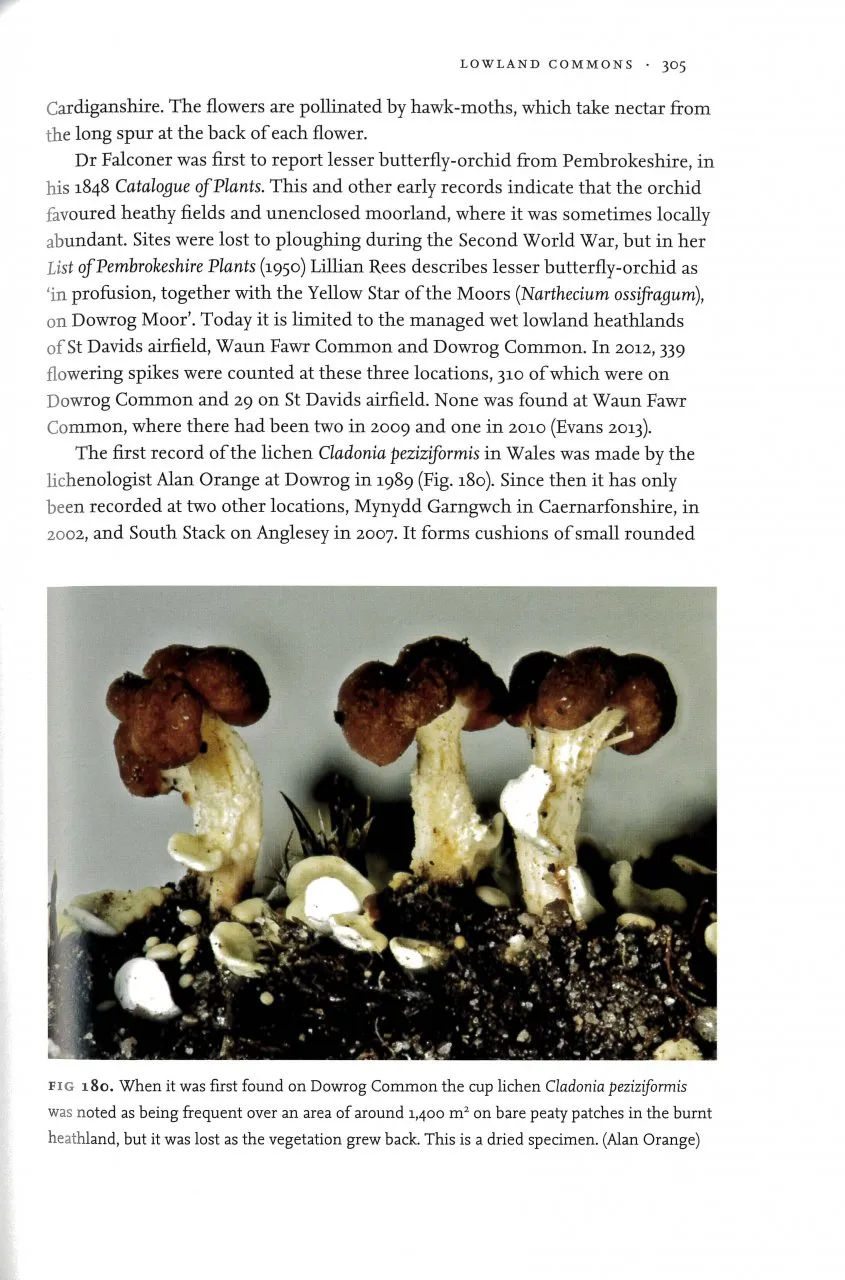This is Jonathan Mullard’s third Welsh regional volume in the New Naturalist series, after Gower in 2006 and Brecon Beacons in 2014. Pembrokeshire has an exceptionally diverse coastline with internationally important and very well-studied seabird islands. To describe these islands along with the mainland coast and to do justice to the inland parts of Pembrokeshire has been a Herculean task. The result is a volume crammed full of fascinating highlights of what can be found, presented in the ‘grasshopper’ style of the two earlier books. The many photographs are again superb.
Mullard has written a most enjoyable historical romp through the nature of Pembrokeshire. The many entertaining anecdotes capture the enquiring spirit of the old naturalists. I was particularly pleased with the mention of the Elizabethan polymath, George Owen of Henllys, whose description of the landscape, natural history, and the customs and people of the county is astonishing. Owen even produced a map of the county which is regarded as one of the gems of the maps collection at the National Library of Wales. On one side it has an alphabetical index of place names which is keyed into the map by a marginal grid. A copy of this map ought to have been included. Indeed, there are only two maps in the book, whereas there were 11 in the Gower volume.
View this book on the NHBS website
Two chapters, ‘Cathedral, Churches and Chapels’ and ‘Castles and Palaces’, stand out for the way they seamlessly merge history and natural history. The start of the aptly titled ‘Farmland Survivals’ chapter gently chides agriculture for creating a ‘green desert’ and goes on to include a telling comment that it is notable that ‘most of the meadows now designated as Sites of Special Scientific Interest form part of smallholdings owned and managed by former employees of conservation organisations’.
There is a geological map, and the story of the underlying rocks is another good read with much on the early discoveries. More could have been said about the superb Geological Conservation Review series initiated in 1977 by the Nature Conservancy Council (NCC).
The description of the sublittoral world relies very much on the huge numbers of surveys of the waters within the Skomer Marine Nature Reserve. Some of the scarce species are well described, but their communities less so. The diving staff who helped to set up and ran this pioneering marine reserve for a quarter of a century receive praise but, like many of us, Mullard wonders whether the replacement Marine Conservation Zone will be as effective. There is comment about numerous intertidal and inshore survey and monitoring reports away from Skomer, but an admission that it was beyond the scope of the book to summarise their findings.
The vast amount of information about the two internationally important seabird islands, Skomer and Skokholm NNRs, seems to have caused difficulties for the author. For example, Mike Harris has written at least 25 papers reporting his work on Skokholm and 12 on Skomer, yet only two are in the references. The discussion of Tim Birkhead’s long-running Skomer Guillemot studies should have included mention of the pre-eminent role of the Oxford University Edward Grey Institute of Field Ornithology. Shortage of space perhaps also accounts for the fact that there is nothing about the long-running work on the Grey Seals of Skomer. Although recent seal work on Ramsey is covered, early pioneering studies are missing.
Nonetheless, despite the omissions there is a huge amount of fascinating information in the well-written chapters on the islands. As for the mainland coast, the author admits that it is ‘impossible to cover all of the rocky coastline in detail’. This follows a most important section summarising the success story of reintroducing coastal grazing, largely to help the Chough population. There are excellent summaries of invertebrates at Stackpole NNR, a very clear explanation of the complexities of the various rock sea-lavenders and a delightful piece on the Scaly Cricket. These are just some of the examples of stories that deserve to be, and are, well told.
Unfortunately, the great growth of knowledge about the habitats of Pembrokeshire that occurred between 1970 and 2010, led by the NCC in partnership with the Field Studies Council, the local Wildlife Trust and other organisations, is hardly referred to. Many of the findings from this recent golden age of exploration of the nature of Pembrokeshire were used to refine the SSSI selection and improve the site descriptions which underpin much of the author’s text.
The final chapter is a thought-provoking piece on conserving Pembrokeshire. This is needed, as much of the earlier chapters tend to favour good news over bad. It covers the climate crisis, pollution and conservation and carbon. The wording is diplomatically crafted, and I would suggest that the scale of the current expansion of huge dairy units, some now practising zero grazing, could perhaps have received more brutal treatment.
Tucked away in this last part of the book is a profound explanatory statement by Mullard: ‘People do not realise what we have already lost, which is why I have included so many examples from the past in this book.’ This book is a brave attempt and should be read and, it is hoped, enjoyed despite the errors and omissions that may be obvious only to those long embedded in the nature of this most westerly county of Wales. An error that may not amuse any foodies fond of Goji berries is the suggestion, on page 263, that the red berries are probably poisonous to humans! More seriously, though, some might agree with me that it would have been better as two volumes, one on the islands and the seas beyond, and the other on the mainland coast and inland Pembrokeshire.
